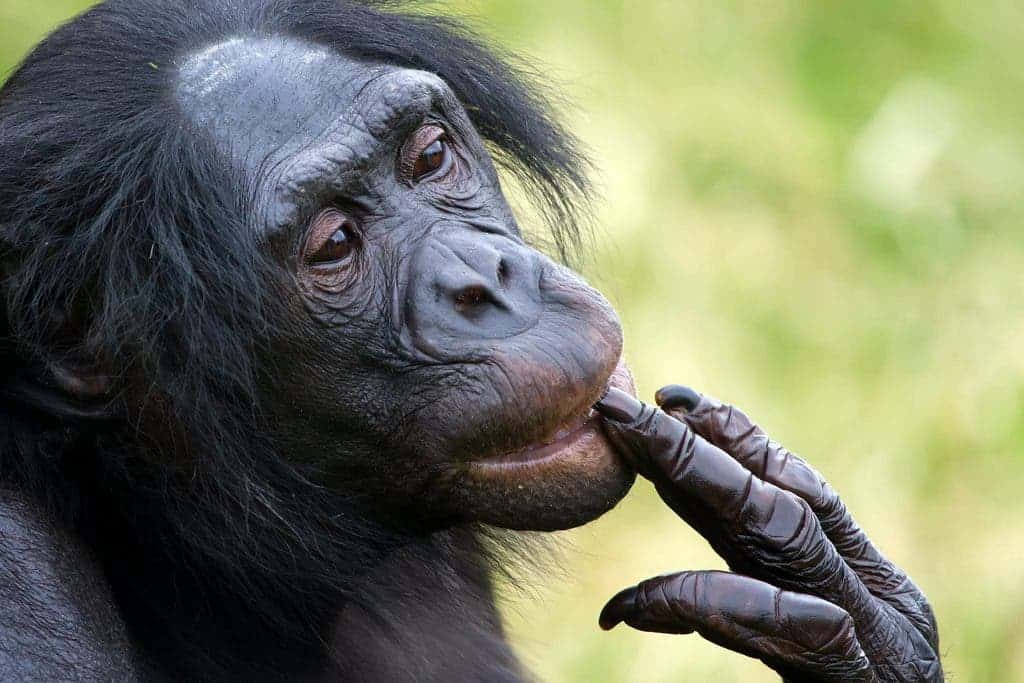The gentlest of all apes takes friendship very seriously. New research suggests bonobos can remember the voices of their friends and become highly excited once they hear them again, even after a long time had past since their last encounter.

This is according to researchers from the Universities of St Andrews in the U.K and Saint-Etienne in France. They recorded the calls of bonobos, then played them back to other individuals. If the call came from a bonobo the listener knew, then the primate became visibly excited. If the call was unfamiliar, little attention was paid. Even in extreme cases where the friends were separated for up to five years, the listeners still recognized the calls. The video below shows one male reacting to a familiar call.
“Members of a bonobo community separate regularly into small groups for hours or even days and often use loud calls to communicate with one another. Moreover, females leave their original community but may continue to interact with their old companions in subsequent meetings between communities,” said Sumir Keenan, of the School of Psychology and Neuroscience at the University of St Andrews.
“So, effective social navigation depends on the ability to recognise social partners past and present. It is fascinating to discover that this knowledge of familiar voices in the long term is another characteristic we share with our closest relatives,” Keenan added.
Found only in the central portion of Democratic Republic of the Congo (Congo Basin), south of the Congo river, bonobos form one of the most complex social structures in the animal kingdom. Their society is female-centered, while being egalitarian. Their also known for their sexual appetite, having frequent sex –and not just between males and females. Bonobos engage in sex in virtually every partner combination (although such contact among close family members may be suppressed).
Concerning communication, bonobos exhibit remarkable skill and aptitudes. For instance, they’re so expressive that researchers have caught individuals in such poses as “silent teeth baring,” “tense mouth,” “silent pout,” “duck face,” or “play face,” and these represent only a percentage of the facial expressions seen in bonobos. Similar to visual communication, vocal communication is also important in bonobo society. Some of the vocal displays noted in bonobos include: “low hooting,” “high hooting,” “contest hooting,” “wieew-bark,” and “greeting grunts”.
Just like humans, bonobos are also able to distinguish between voices, according to the findings published in the journal Scientific Reports. “It is fascinating to discover that this knowledge of familiar voices in the long term is another characteristic we share with our closest relatives,” Keenan said.






